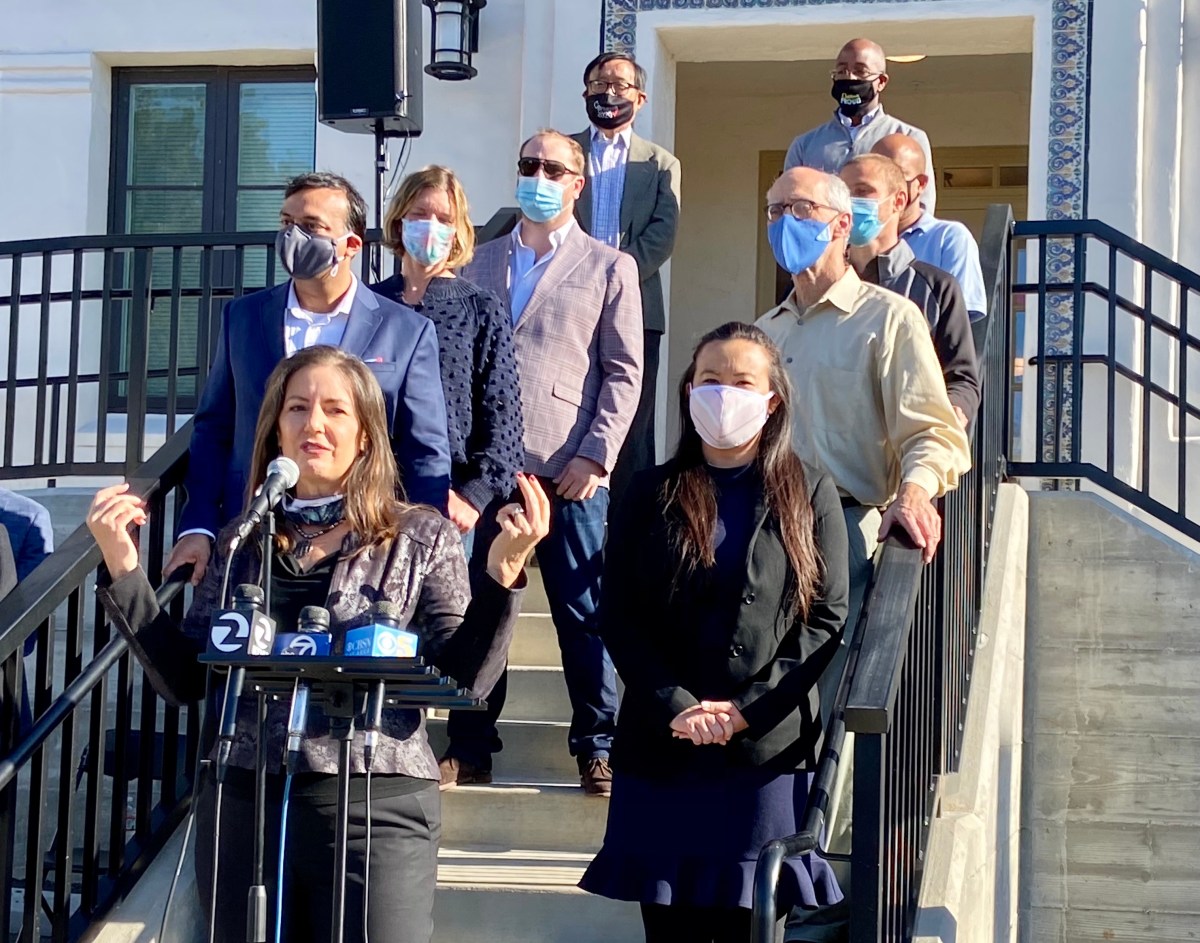In a region with soaring rents and home prices, the lack of affordable housing can deter early career teachers from choosing to work in Oakland schools. A pilot program announced Monday by Mayor Libby Schaaf is designed to help students working towards a teaching credential stay in Oakland by providing them with an affordable home.
Twelve new teachers are taking part in the program this year. Six of them are student teachers living at the Paloma Apartments in the Laurel District. Their rent is subsidized by grants from several large foundations and the building’s developer. Malik Stead, one of the residents at the apartment complex, is completing his student teaching year at Roosevelt Middle School, where he teaches 7th grade science.
“When I was choosing where I wanted to teach, I could have chosen anywhere else. But this pilot made it very economically feasible for me to teach in Oakland,” he said. “It’s really given me the opportunity to spend more time planning lessons, more time building rapport with students, and attending office hours.”
The Oakland Teacher Residency Program provides a $15,000 stipend for a year of student teaching if participants commit to work for the Oakland Unified School District for four years. Students living at the Paloma Apartments pay 30% of their stipend on rent, or about $375 per month. Another student teacher in the program who chose not to live in the teacher apartments receives a $1,500 a month stipend instead. Five other first- and second-year teachers in the program receive a $500 a month stipend.
The pilot program was launched with philanthropic support from the California Endowment, the Lisa Pritzker Family Foundation, the Hellman Foundation, and an anonymous donor.
“Housing here in the Bay Area is just so out of reach for so many people,” said OUSD Superintendent Kyla Johnson-Trammell. “Over and over and over, I’ve run into so many teachers that are committed to wanting to work in Oakland, but they simply cannot afford it.”
The residency program emphasizes supporting teachers of color and educators who work in positions that see more turnover, like special education and science, technology, math, and engineering.
Schaaf said she is committed to raising enough money to support this year’s cohort for the next four years as they become full-fledged teachers in Oakland schools. They will receive either $500 a month, or enough to cap their rent at 30% of their income, the percent that is generally considered to be affordable. The next four groups in Oakland’s teacher residency program will also receive housing support for the first five years of their careers, Schaaf said, if they are able to raise enough money. The goal is to support 112 teachers through 2029. No public funds were put towards the program.
“We believe that this combination of affordable units for our residents, as well as a guaranteed income offering is going to help attract and retain the best teachers,” Schaaf said.
Last year, just under half of OUSD’s newly hired teachers lived in Oakland. The district’s youngest teachers, aged 20 to 29, have the lowest retention rate across age groups, according to district data. Last year, 77% of teachers in that age range returned to the classroom. Teachers between 40 and 49 and 50 and 59 had the highest retention rates, at 88 to 89%.
Lorna Rayos, who is earning her master’s degree in special education at CSU East Bay, also lives at the Paloma Apartments while teaching special education at Oakland Technical High School. While working as a full-time substitute teacher last year, half of her salary went to rent each month, Rayos said.
Although she’s grateful that the program makes it possible to go to school and live and teach in Oakland, Rayos said she thinks it should be expanded so all teachers can have lower housing costs. Last year, OUSD employed about 2,300 teachers.
“I feel it’s unfair, sharing this (information) with my mentor teacher who lives in Emeryville because it’s more affordable,” she said. “I feel this should be offered to everyone.”
A resolution passed last week by the OUSD school board may do just that. The proposal from director Jumoke HInton Hodge directs the school district to use some of its property to build housing for teachers, staff, and unsheltered students and families.
“We sit on globs of land,” she said. “We need to not have homeless people and homeless children. What can we do to support that?”
OUSD enrolled 1,031 unhoused students last year, and more than half of those students are recent immigrants who arrived alone.
In March, district staff will present a report to the board evaluating sites for building housing and developers who can potentially partner with the district on future projects. The resolution also instructs the district to explore modular housing options for unhoused youth, unaccompanied minors and recent immigrants for the 2020-2021 school year.

